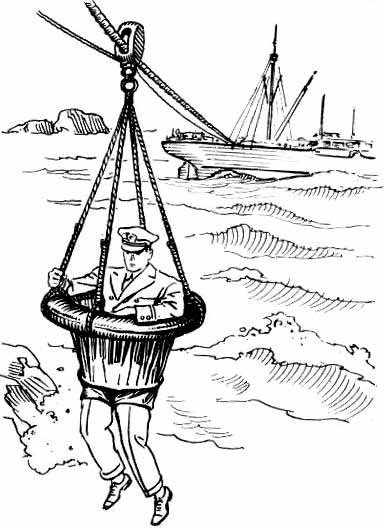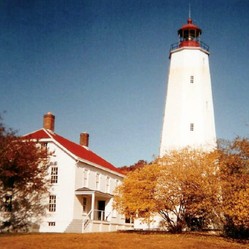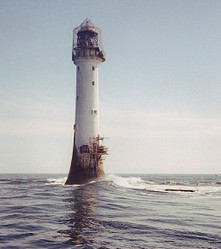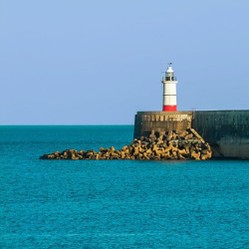Lighthouses are, by their nature, each unique. So, choosing three, and calling them a unique group is a bit of a difficult task.
Each of the three I've chosen for this page does, however, have something that sets it apart.
One, in New Jersey, is the oldest surviving working lighthouse in the United States. Another, on one of South Carolina's barrier islands, was the last manned lighthouse to be built on U.S. soil. In Oregon, they built one on one of the most dangerous locations of any in the country, and, after decommissioning, it served a rather different purpose.
They're not necessarily uniquely American, as appearances mark just one of them as such. What makes each different probably does not do so from a global perspective, either. But, each one has at least one quality that makes it unique among those lights found in the United States.
Here, then are brief stories of what it is that makes the beacons at Sandy Hook, Tillamook Rock, and Sullivan's Island unique.







 From the moment a keeper learned he was bound for duty at Terrible Tilly, he must have felt a sense of foreboding.
From the moment a keeper learned he was bound for duty at Terrible Tilly, he must have felt a sense of foreboding.










 Gold Heart Locketson 12/30/2015
Gold Heart Locketson 12/30/2015
 Ships and Boats on Electrical Wall Plateson 11/12/2015
Ships and Boats on Electrical Wall Plateson 11/12/2015
 Nautical Jigsaw Puzzles: Ships and the Seaon 11/04/2015
Nautical Jigsaw Puzzles: Ships and the Seaon 11/04/2015
 Tropical Flower Christmas Ornamentson 11/03/2015
Tropical Flower Christmas Ornamentson 11/03/2015



Do You Have a Favorite Lighthouse?
CruiseReady, Do you know if it was the depth, the distance or the precariousness (since none of those conditions appears to have gotten in the way of Tillamook Rock Light for 76 years) that made the Morris Island Light unusable? How is it doing these days? A program on Edward Teach, as part of the Secrets of the Dead series, mentions the ever-shifting geography and oceanography off the Carolinas. How effective and permanent would any stabilization be in the light of such impermanence?
You can view it from the land, but to get to the lighthouse itself, you might have to charter a helicopter.
I would love to see the Tillamook Lighthouse. It's location is so dramatic and beautiful. Although I couldn't imagine going through a storm there!